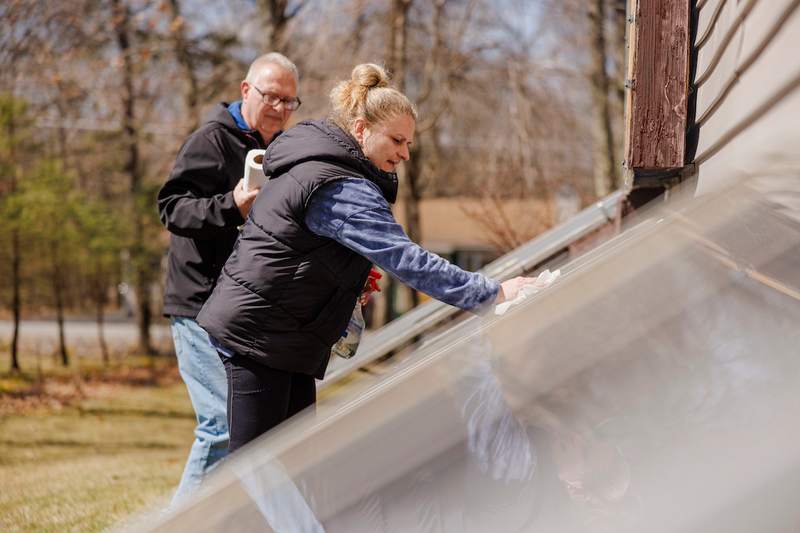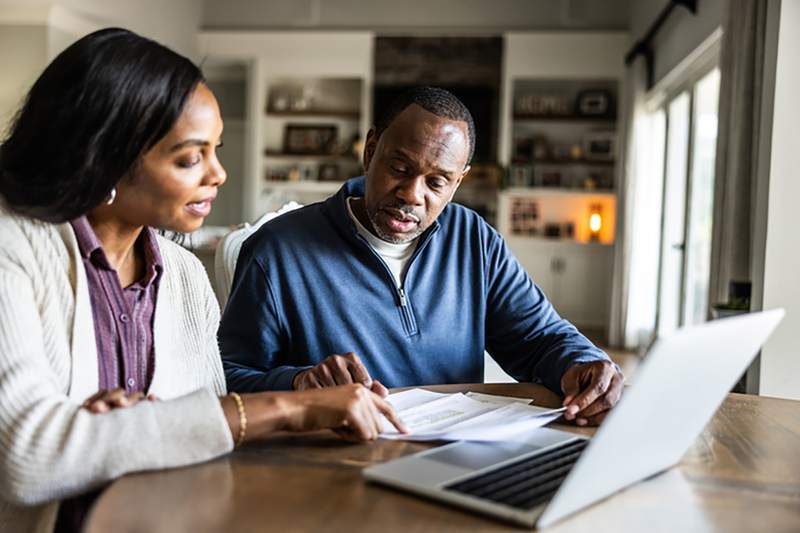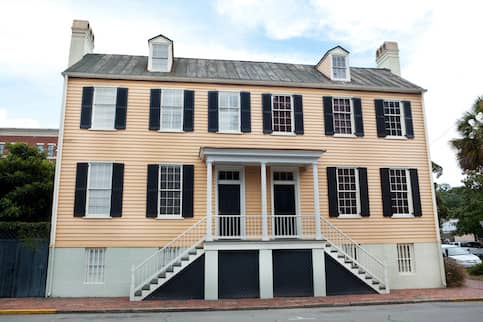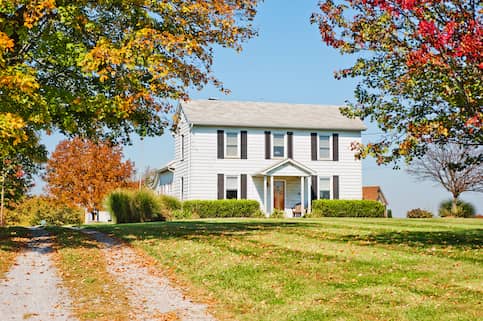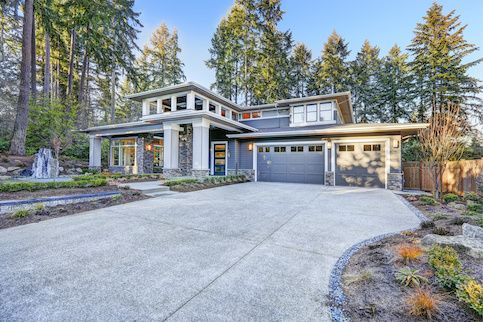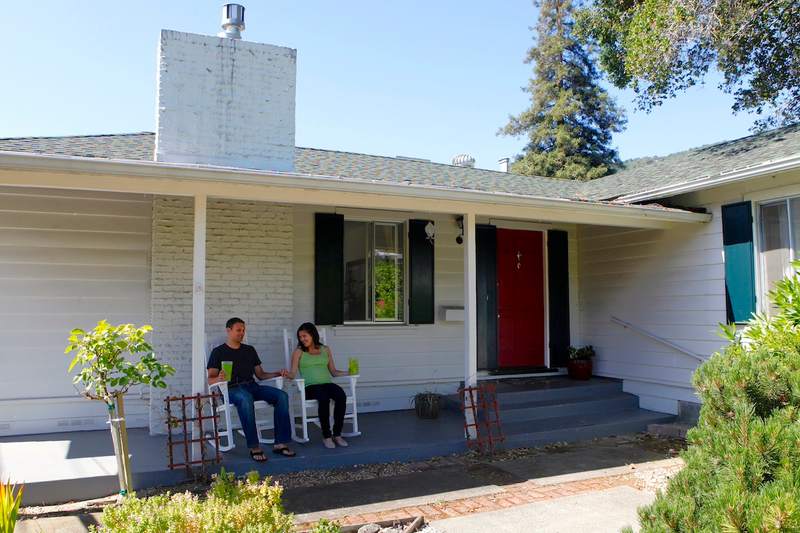Effective Nov. 16, 2025, both Fannie Mae and Freddie Mac no longer require a specific minimum credit score for conventional loan approval. Instead, loan decisions will be based on an analysis of overall credit risk factors.
Owning a home requires you to make sure you can afford to heat and cool it. If the home you plan to buy or the one you own needs upgrades to reduce the utility bills and give the environment a bit of a break, you can consider an energy-efficient mortgage, or EEM. Also known as green mortgages, these loans help you afford to buy or refinance your home and pay for upgrades that can make it more energy-efficient and save you money in the long run.
Key Takeaways:
- An energy-efficient mortgage can help you update your home by rolling the cost of eligible upgrades into your mortgage.
- An energy-efficient home is more eco-friendly and will save you money on utility bills.
- Lenders consider your reduced energy bills when underwriting an EEM loan, which may allow you to borrow more than you otherwise could.
What Is An Energy-Efficient Mortgage?
An energy-efficient home mortgage lets you make energy-efficient upgrades when you buy or refinance a home. This reduces your energy costs and is more eco-friendly. Energy-efficient upgrades also can help you get more favorable loan terms because lenders will consider the lower utility costs when determining how much you can afford to borrow.
For example, the lender may allow you to have a slightly higher debt-to-income ratio because they know you won’t need to spend as much on your energy bills. As a result, you could qualify for a larger loan to pay for energy-efficient upgrades or buy a home that costs more because it’s already energy-efficient.
Eligible Energy-Efficient Home Improvements
Here’s a partial list of renovations you can make with an EEM:
- Replace appliances
- Install smart energy systems and thermostats
- Upgrade the furnace or heat pump
- Upgrade the heating, ventilation and air-conditioning system
- Replace the water heater
- Add insulation
- Seal and weatherize doors and windows
- Install energy-efficient windows
- Repair or install the duct system
- Specific roof improvements
- Upgrade light fixtures
What’s Your Goal?
Buy A Home
Discover mortgage options that fit your unique financial needs.

Refinance
Refinance your mortgage to have more money for what matters.
Tap Into Equity
Use your home’s equity and unlock cash to achieve your goals.
How Do Energy-Efficient Home Loans Work?
An energy-efficient mortgage is like a typical home loan in that you use it to buy or refinance a home. The difference is that you can borrow more than you need to buy or refinance and use the extra money for renovations that make the home more energy-efficient. You also may be able to borrow more with an EEM to buy a home that’s already energy-efficient because the lender will consider the fact that you’ll spend less on energy costs when underwriting your loan.
“These loans let purchasers buy or refinance houses that meet particular energy-efficiency criteria, as well as make energy-efficient modifications,” says Nate Johnson, an Atlanta-based investment and property specialist at NeighborWho, a property search site. “Energy-efficient house financing may result in decreased power costs, better home comfort and less environmental impact. They may also qualify borrowers for bigger loan amounts based on the anticipated energy savings.”
The Home Energy Assessment
A professional home energy rater needs to visit and assess the home before you can get an EEM. The lender will require verification that the home is either energy-efficient or will be once specific improvements are completed. The lender also will need to know how much the upgrades will save you on your monthly energy bills and the value of the energy-efficient systems.
Ready To Become A Homeowner?
Get matched with a lender that can help you find the right mortgage.
What Are The Different Types Of Green Mortgages?
Energy-efficient mortgages can be conventional loans or government-backed loans.
Conventional Energy-Efficient Home Loans
A conventional loan is a mortgage not backed by the government. The down payment for a conventional loan can be as low as 3%, which can help borrowers minimize upfront costs. The two primary types of conventional EEMs are Fannie Mae’s HomeStyle EEM and Freddie Mac’s GreenChoice EEM.
Fannie Mae HomeStyle Energy-Efficient Mortgage
Fannie Mae’s HomeStyle EEM allows borrowers to roll the cost of energy-efficient upgrades into the purchase or refinance amount. You can borrow up to 15% of what the home will be worth when upgrades are completed to pay for eligible improvements such as smart thermostats and energy-saving windows. This loan also can be used to pay off other loans taken on to pay for energy upgrades, such as a Property Assessed Clean Energy, or PACE, loan.
Freddie Mac GreenChoice Energy-Efficient Mortgage
Freddie Mac’s GreenChoice Energy-Efficient Mortgage also lets you borrow up to 15% of what your home’s appraised value will be after upgrades are complete. Eligible upgrades include programmable thermostats, air sealing, insulation and HVAC replacement.
FHA Energy-Efficient Mortgages
Federal Housing Administration Energy-Efficient Mortgages are government-insured and less risky for lenders, which helps borrowers qualify with a low down payment and low minimum credit score. The borrower needs to qualify only for the portion of the FHA loan used to buy or refinance the home. The total loan amount can include the home’s purchase price plus an amount based on the lesser of the required home energy assessment’s cost estimate, 5% of the home’s adjusted value, 5% of 115% of the median area price for a single-family home, or 5% of 150% of the conforming loan limit for the area. The Department of Housing and Urban Development offers a searchable database you can use to find approved lenders.
VA Energy-Efficient Mortgages
Veterans Affairs Energy-Efficient Mortgages are available only to military service members, veterans and their eligible surviving spouses. These VA loans can help borrowers finance energy-efficient upgrades of up to $6,000. The list of eligible home improvements is specific. Projects like adding insulation, solar energy panels and weatherproofing are acceptable, while new air conditioning units or appliances are not.
USDA Single Family Housing Guaranteed Loans
The U.S. Department of Agriculture offers the Single Family Housing Guaranteed Loan Program to eligible borrowers in certain rural areas. While not specifically an EEM, these USDA loans allow low- and moderate-income borrowers to buy, build, rehabilitate or improve a home – including making energy-efficient upgrades. Borrowers must meet income limits and buy a house in an eligible area. For more information on eligibility, you can use this tool from the USDA.
Take The First Step To Buying A Home
Find a lender that will work with your unique financial situation.
Energy-Efficient Mortgage Requirements
Borrower requirements vary depending on loan type. For example, you’ll need a credit score of at least 620 to qualify for a conventional loan, but FHA loans allow for a credit score as low as 500 with a down payment of 10%. The difference with EEMs is that you also must document that the improvements are energy-efficient and will save you money. The energy rater also will include potential energy savings using a home energy rating system. This calculation of the amount you stand to save will be included in the underwriting process and will affect the loan terms that you’re offered.
Pros And Cons Of Energy-Efficient Mortgages
Before you take out an EEM, it’s a good idea to weigh the pros and cons.
Pros
Advantages of EEMs include:
- Increased purchasing power
- Lower utility bills
- Eco-friendly
- A more comfortable home
- Potential higher resale value
Cons
However, EEMs have downsides, including:
- Not all renovations are eligible.
- Not all lenders offer EEMs.
- You’ll be borrowing more money.
- A home assessment is required.
Alternatives To Green Home Loan Programs
An energy-efficient mortgage can be a helpful way to fund home renovations, but it isn’t your only option.
Home Equity Loan
A home equity loan lets you borrow a lump sum against your home equity, which is how much your home is worth minus what you owe on it. A home equity loan is a second mortgage and uses your home as collateral, so you’ll need to make a separate payment each month and, if you fail to pay back the loan, your lender can foreclose. Home equity loans typically have a fixed rate.
HELOC
A home equity line of credit also borrows your equity. However, instead of receiving a lump sum, your equity backs a line of credit you can draw on as needed. This can be helpful if you don’t know exactly how much your renovations will cost or if you think the project might go over budget. As with a home equity loan, your home is collateral and, if you default, the lender can foreclose. HELOCs typically have an adjustable rate, which means the monthly payment can vary.
Cash-Out Refinance
A cash-out refinance lets you turn your equity into cash by taking out a new mortgage based on your home’s current market value. After repaying your current mortgage, you keep the difference as cash and repay it as part of your new mortgage. You’ll have only one mortgage to repay, but you’ll reduce your home equity and increase what you owe on your mortgage.
Personal Loan
A personal loan is not secured by your equity or home. That means you won’t risk foreclosure if you default, but you can expect to pay a significantly higher interest rate.
FAQ
Here are answers to some common questions about energy-efficient mortgages:
The Bottom Line
Whether you want to buy an energy-efficient home or add efficiencies to a home you plan to buy or refinance, an EEM can help you make it happen. Upgrades you make with an EEM can save you money on utilities and expand your purchasing power without taking out a separate loan. It also reduces your energy use, which is eco-friendly. Just keep in mind that not all renovations are eligible and not all lenders offer EEMs.
More From Quicken Loans:

Rory Arnold
Rory Arnold is a Los Angeles-based writer who has contributed to a variety of publications, including Quicken Loans, LowerMyBills, Ranker, Earth.com and JerseyDigs. He has also been quoted in The Atlantic. Rory received his Bachelor of Science in Media, Culture and Communication from New York University. He also completed the SoFi/Coursera Fundamentals of Personal Finance Specialization consisting of five courses: Introduction to Personal Finance, Saving Money for the Future, Managing Debt, Fundamentals of Investing, and Risk Management in Personal Finance.
